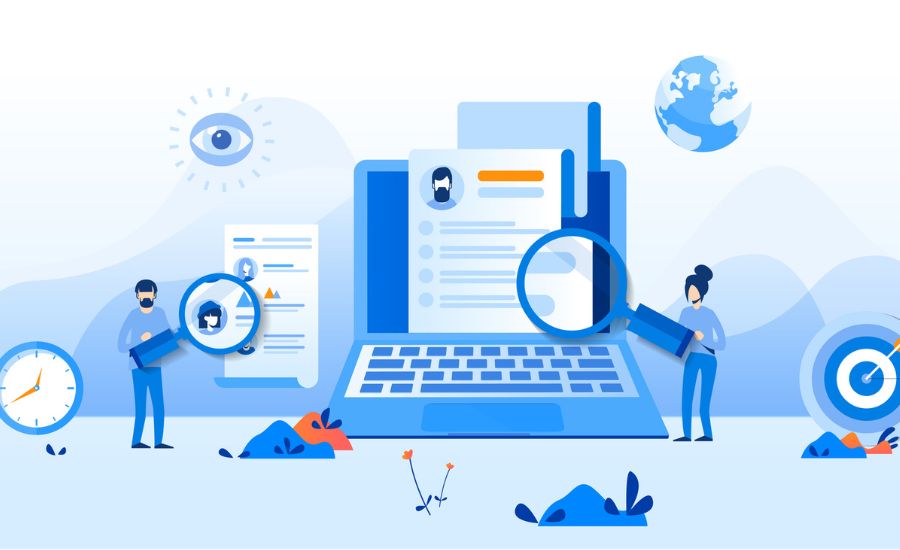Streamlining Recruitment: How Hiring Management Software and Applicant Tracking Systems Transform Modern Hiring Practices

In today’s competitive job market, companies are continually searching for ways to streamline recruitment processes, reduce hiring times, and enhance the candidate experience. Two powerful tools, hiring management software and applicant tracking systems (ATS), have become essential for modern HR teams. By integrating these systems, companies can optimize their recruitment strategies, attract top talent, and improve operational efficiency. This guide will explore how these technologies work together to transform recruitment and provide real-life examples of companies that have successfully adopted them.
Key Features of Hiring Management Software and Applicant Tracking Systems
Hiring management software is a comprehensive tool that manages every stage of the recruitment process, from posting job openings to tracking candidates and managing interviews. Applicant tracking systems focus specifically on organizing and tracking job applications, ensuring that no candidate is overlooked.
Some of the most important features include:
- Automated Job Posting: Hiring management software allows you to post job openings to multiple job boards and social media platforms with just one click, saving time and expanding your reach.
- Candidate Screening and Filtering: ATS technology uses algorithms to scan resumes for relevant keywords, qualifications, and experiences, helping recruiters quickly identify top candidates.
- Interview Scheduling: Both tools streamline interview scheduling by allowing candidates to choose available time slots, reducing back-and-forth communication.
- Collaboration and Communication: Hiring management software facilitates collaboration among HR teams by providing shared candidate profiles, notes, and feedback, making it easier to make collective hiring decisions.
- Data Analytics and Reporting: Advanced reporting features allow HR teams to analyze key metrics, such as time-to-hire, cost-per-hire, and applicant quality, enabling continuous improvement of recruitment processes.
Benefits of Integrating Hiring Management Software with Applicant Tracking Systems
1. Streamlined Recruitment Process
One of the primary benefits of integrating hiring management software with an ATS is the significant reduction in manual tasks. Automation in job posting, resume screening, and interview scheduling not only saves time but also minimizes human errors. For example, companies like Google and IBM have successfully implemented such systems to reduce their average time-to-hire by automating redundant tasks.
2. Enhanced Candidate Experience
Providing a seamless and positive candidate experience is critical in attracting top talent. An integrated system ensures that candidates receive timely updates on their application status, easy access to job descriptions, and an intuitive platform to schedule interviews. Shopify, a leading e-commerce company, uses ATS and hiring management tools to create an engaging recruitment process, ensuring candidates are always informed and engaged.
3. Improved Collaboration Among HR Teams
With hiring management software, recruiters, hiring managers, and HR teams can easily collaborate on candidate evaluation, feedback, and decision-making. Shared access to candidate profiles and real-time updates allow teams to move swiftly through the hiring process. Zappos, known for its collaborative culture, utilizes integrated ATS software to foster team-based hiring decisions, improving the quality of hires and reducing time-to-hire.
4. Data-Driven Decision Making
Both hiring management software and ATS provide valuable insights through data analytics. HR teams can track metrics such as time-to-fill, cost-per-hire, and applicant-to-hire ratios, helping them make informed decisions. For instance, Microsoft leverages ATS reporting tools to fine-tune its recruitment strategies, resulting in lower hiring costs and improved candidate quality.
Real-Life Examples of Successful Adoption
- Airbnb: This global platform uses a combination of hiring management software and ATS to streamline its talent acquisition process. By automating resume filtering and interview scheduling, Airbnb reduced its time-to-hire by 30%, allowing it to quickly fill key roles in a competitive tech landscape.
- Unilever: Known for its commitment to diversity and inclusion, Unilever integrated an ATS with its hiring management system to eliminate bias in the recruitment process. The system’s AI-powered tools ensure that all candidates are evaluated based on merit, leading to a more diverse workforce.
- Slack: Slack, a leader in workplace collaboration tools, adopted a fully integrated recruitment platform to improve its talent acquisition process. The software not only helped Slack attract top-tier tech talent but also enhanced the candidate experience by offering transparent communication and smooth onboarding.
Measuring the Success of Your Integrated Recruitment Tools
To assess whether your hiring management software and ATS are delivering the desired results, it’s important to track key performance indicators (KPIs). Some of the most relevant metrics include:
- Time-to-Hire: Measure the average time it takes to fill a position. A reduced time-to-hire indicates that your recruitment process is more efficient.
- Applicant Quality: Evaluate the caliber of candidates applying for your positions. Are they meeting the required qualifications? Higher-quality applicants suggest that your ATS and software are effectively targeting the right talent.
- Cost-per-Hire: Track the total cost involved in filling a position, including job advertising, recruitment software costs, and HR staff time. A lower cost-per-hire signals cost-efficiency.
- Retention Rates: Monitor the retention rates of new hires. High retention rates suggest that your recruitment tools are not only attracting top talent but also individuals who fit well with your company culture.
Conclusion
Integrating hiring management software and an applicant tracking system is essential for companies looking to streamline recruitment, enhance the candidate experience, and improve overall efficiency. By automating routine tasks, facilitating collaboration, and providing data-driven insights, these tools allow HR teams to focus on what matters most—hiring the right talent. Companies like Airbnb, Unilever, and Slack have demonstrated the transformative power of these tools, paving the way for a more efficient and engaging recruitment process.
By adopting these technologies, your company can stay ahead in the competitive talent acquisition landscape, ensuring you attract, engage, and retain the best talent in the market.
Stay connected with: trustblogs






